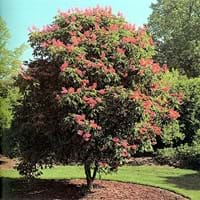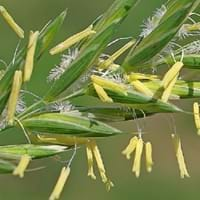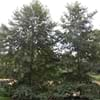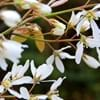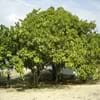Life Span
Perennial
Annual
Origin
Mid-Atlantic United States, Southeastern United States, Central United States, South-Central United States, Texas
Not Available
Types
Typical Red Buckeye, Yellow-flowered Red Buckeye
Not Available
Number of Varieties
Not Available
Habitat
Shady Edge, Woodland Garden Dappled Shade
Wet lands
USDA Hardiness Zone
5-9
Not Available
AHS Heat Zone
9-5
Not Available
Sunset Zone
2a, 3a, 3b, 4, 5, 6, 7, 8, 9, 14, 15, 16, 17, 18, 19, 20, 21, 22, 23, 24
Not Available
Habit
Clump-Forming
Not Available
Minimum Height
Not Available
Minimum Width
Not Available
Flower Color
Yellow, Red, Orange Red
Indigo
Flower Color Modifier
Bicolor
Bicolor
Leaf Color in Spring
Dark Green
Not Available
Leaf Color in Summer
Dark Green
Light Green
Leaf Color in Fall
Yellow, Dark Green
Not Available
Leaf Color in Winter
Not Available
Not Available
Leaf Shape
Elliptic
Grass like
Plant Season
Spring, Summer, Fall
Not Available
Sunlight
Full Sun, Partial Sun, Partial shade
Full Sun, Partial Sun
Growth Rate
Medium
Not Available
Type of Soil
Clay, Loam
Moist
The pH of Soil
Acidic, Neutral
Acidic, Neutral, Alkaline
Soil Drainage
Average
Average
Bloom Time
Spring
Not Available
Repeat Bloomer
No
Not Available
Tolerances
Not Available
Not Available
Where to Plant?
Ground
Ground
How to Plant?
Seedlings
Seedlings
Plant Maintenance
Medium
Medium
Watering Requirements
Average Water Needs, Do Not over Water
Requires watering in the growing season
In Summer
Lots of watering
Lots of watering
In Spring
Moderate
Moderate
In Winter
Average Water
Average Water
Soil pH
Acidic, Neutral
Acidic, Neutral, Alkaline
Soil Type
Clay, Loam
Moist
Soil Drainage Capacity
Average
Average
Sun Exposure
Full Sun, Partial Sun, Partial shade
Full Sun, Partial Sun
Pruning
Remove dead branches
Remove damaged leaves, Remove dead branches, Remove dead leaves
Fertilizers
Apply 10-10-10 amount
All-Purpose Liquid Fertilizer
Pests and Diseases
Leaf Blotch
Red blotch
Plant Tolerance
Drought
Drought
Flowers
Showy
Not Available
Flower Petal Number
Single
Single
Edible Fruit
No
Not Available
Foliage Texture
Coarse
Not Available
Foliage Sheen
Glossy
Not Available
Invasive
No
Not Available
Attracts
Hummingbirds
Deers
Allergy
Pollen
Not Available
Aesthetic Uses
Showy Purposes
small hedge
Beauty Benefits
Not Available
Not Available
Environmental Uses
Air purification
Air purification
Medicinal Uses
Cancer, Hypnotic, Odontalgic, Salve
Diuretic, Prevention of convulsion
Part of Plant Used
Seeds
Leaves
Other Uses
Grounded seed is used as a gruel, Used as a soap substitute
Used as Biofuel
Used As Indoor Plant
No
No
Used As Outdoor Plant
Yes
Yes
Garden Design
Feature Plant, Foundation, Mixed Border, Screening / Wind Break
Not Available
Botanical Name
AESCULUS pavia
PANICUM
Common Name
Red Buckeye
Panicum
In Hindi
Red Buckeye
panikom
In German
Red Buckeye
panikom
In French
Red Buckeye
panikom
In Spanish
rojo castaño de Indias
panikom
In Greek
κόκκινο Buckeye
Panicum
In Portuguese
Red Buckeye
Panicum
In Polish
Red Buckeye
Panicum
In Latin
Red Buckeye
Panicum
Phylum
Magnoliophyta
Magnoliophyta
Class
Magnoliopsida
Liliopsida
Family
Hippocastanaceae
Poaceae
Clade
Angiosperms, Eudicots, Rosids
Angiosperms, Commelinids, Monocots
Tribe
Not Available
Not Available
Subfamily
Hippocastanoideae
Panicoideae
Number of Species
Not Available
Difference Between Red Buckeye and Panicum
If you are confused whether Red Buckeye or Panicum are same, here are some features about those plants to help you choose better. Many people think that these two plants have the same characteristics, but one can see Red Buckeye and Panicum Information and learn more about it. Fertilizers required for proper growth of Red Buckeye are Apply 10-10-10 amount, whereas for Panicum fertilizers required are All-Purpose Liquid Fertilizer. Hence, one should know the basic difference between Red Buckeye and Panicum if you are planning to have them in your garden to enhance its beauty.
<
Flowering PlantsImportance of Red Buckeye and Panicum
Want to have the most appropriate plant for your garden? You might want to know the importance of Red Buckeye and Panicum. Basically, these two plants vary in many aspects. Compare Red Buckeye and Panicum as they differ in many characteristics such as their life, care, benefits, facts, etc. Every gardener must at least have the slightest clue about the plants he wants to plant in his garden. Compare their benefits, which differ in many ways like facts and uses. The medicinal use of Red Buckeye is Cancer, Hypnotic, Odontalgic and Salve whereas of Panicum is Diuretic and Prevention of convulsion. Red Buckeye has beauty benefits as follows: Not Available while Panicum has beauty benefits as follows: Not Available.
Compare Facts of Red Buckeye vs Panicum
How to choose the best garden plant for your garden depending upon its facts? Here garden plant comparison will help you to solve this query. Compare the facts of Red Buckeye vs Panicum and know which one to choose. As garden plants have benefits and other uses, allergy is also a major drawback of plants for some people. Allergic reactions of Red Buckeye are Pollen whereas of Panicum have Not Available respectively. Having a fruit bearing plant in your garden can be a plus point of your garden. Red Buckeye has no showy fruits and Panicum has showy fruits. Also Red Buckeye is not flowering and Panicum is not flowering . You can compare Red Buckeye and Panicum facts and facts of other plants too.
